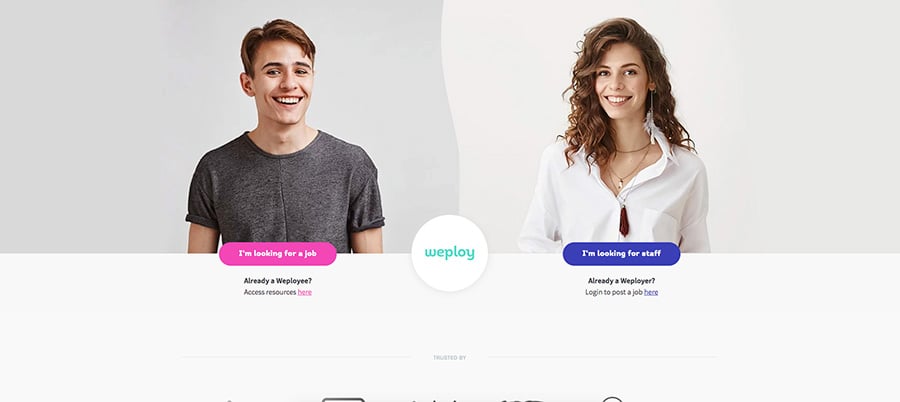When it comes to today’s digital landscape, oversaturated with poorly written and poorly targeted content, your website needs some loving to stand out. An ad hoc approach to regularly updating your content just won’t cut it! Sure your website might have all the basic details about product information and opening times. But if no one is specifically looking for you, it’s unlikely they’re going to know to start looking for you.
That’s where your blog comes in. With high quality, consistent and targeted content you can get your entire website ranking far better and put your business on the digital map.
MAKE YOUR BUSINESS AN AUTHORITY AND A RESOURCE
If someone offered you a lolly, then you’d be more likely to accept it if that someone was a friend rather than a stranger. The difference? Trust!
Building a trustworthy reputation as a business that knows their stuff about the industry is crucial for your business’ growth. People love becoming brand advocates for businesses that have an ethos that resonates with them. Your blog is simply the place where the love story begins between you and your potential customers.
So, what are the best ways to get your business website to rank with a blog?
Getting your business website ranking isn’t the kind of thing you do over night. However, gaining long term wins through effective blogging is possible for every business and you can get started straightaway! If you’re ready for more effective marketing that puts your business website on the digital map, then start on these six steps:
1. Consistently publish content
It’s an obvious first step: to simply get started. However, prioritising consistent content creation can be a challenge for business owners and marketers trying to juggle the never ending to-do list.
Consistency is important because it means:
- You always have fresh content for search engines — a new blog post is a new page to be indexed. Studies have shown a correlation between the number of web pages indexed and number of leads.
- Readers that like what they see will know when to return for more — your blog is like your community, it’s where you spark conversations around topics important to your potential customers. Nothing’s worse than an absentee conversationalist.
While there is no blanket rule for ideal publishing frequency, any less than once a month is too infrequent. A handy editorial calendar will help you to avoid the sporadic publishing schedule and develop a strong content strategy. Get your hands on this freebie and get cracking!
2. Focus on long-tail keywords
In the practice of search engine optimisation, "keywords" are the key words and phrases that a specific blog post or website page might focus on to make it more visible to search engines. The difference between choosing to focus on short, general keywords and long-tail keywords is often the difference between effective and wasted efforts. Short and general keywords suffer from high competition. In comparison, long-tail keywords experience lower search volume yet are easier to rank for and target more relevant visitors.
Therefore, keyword research is must before embarking on any content efforts. It’ll help you choose the best keywords to optimise your business blog and identify the topics and pain points your potential customers are actually thinking about. Notice the difference between short and long-tail keywords:
- Women’s shoes > Orthopedic women’s shoes > Orthopedic women’s shoe shops in Manly
- Electrician in sydney > Commercial electrician in sydney > Commercial electrician in sydney cbd
3. Ace the on-page SEO
On-page SEO is a simple strategy for making your digital content as enjoyable a reading experience as possible for both humans and search engines. It involves all the techniques you do on your web page that are simple yet effective for driving more organic traffic. Before you hit publish on your next piece of content, make sure you’ve perfected:
- The page URL
Ensure you’ve customised your URL to be short and keyword rich. For example youandco.com.au/blog/hubspot-for-social-media/ is preferable to a URL that’s too long or contains too many random numbers and letters. - The title
Ensure your title is approximately 55 characters long and is keyword relevant. Tools such as Coschedule’s Headline Analyser make testing out different titles a breeze. - The formatting for subheadings
Using h1 - h6 title tags in your content provides visual hierarchy, which creates a better reading experience, and makes it easier for search engines to read and understand what your content is about. Ensure at least one of your h2 or h3 tags includes a keyword or secondary keyword. - The alt tags for all images
Though technology is continually changing, search engines have yet to fully perfect reading images. Image alt tags indicate the content and relevance of an image to a search engine. Ensure all of your images have alt tags before hitting publish. - The meta description
A meta description is the short summary of what your content is about that appears in the results of a search. The ideal description is approximately 150 characters long and includes your primary keyword. - The inbound and outbound links
An excess of links on your page can be seen as spammy, so choosing the most relevant links to include is important. Stick to roughly 4 outbound links and 4 inbound links, with at the first link on the page being inbound.
4. Aim for quality and quantity
It’s no doubt quality trumps quantity any day of the week. This doesn’t however mean that quantity is meaningless, but if you have to make a decision as all busy people do, always choose quality. Every. Time.
5. Compare the competitors
Ranking for a specific keyword is like a competition, so it makes sense to check out the competitors before you dive in and invest all your energy into a specific strategy. While you’re doing your keyword research, investigate the kinds of businesses and organisations that are ranking for your ideal long-tail keywords. Are they big brands or home-grown bloggers? What kinds of readers are they writing for? How engaged are they on social media? By identifying the strengths and weaknesses of competitors’ content, you can create content that answers your potential buyer’s questions in ways that competitors have and have not.
OVER TO YOU
Getting your business website to rank is nothing at all like winning the lottery. It doesn’t happen overnight and it doesn’t dish up big returns in one go. However, with a strong SEO and content strategy through targeted blogging efforts, you can get your business website ranking better across search engines. If you’re ready to drive more organic traffic, then grab your hands on this freebie: a guide to dishing up great content using Hubspot as the ultimate launchpad. Alternatively, you can send us a line — we love to chat!





